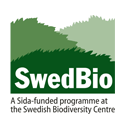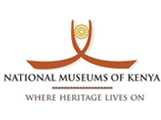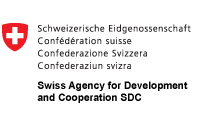Click on images to enlarge
/thumbs/brugmansia_suaveolens01_sml.jpg)
Brugmansia suaveolens plant (Photo: Shihchuan CC BY-NC-SA)
/thumbs/brugmansia_suaveolens02_sml.jpg)
Brugmansia suaveolens plant (Photo: Flora Cyclam CC BY-NC-SA)
/thumbs/brugmansia_suaveolens03_sml.jpg)
Brugmansia suaveolens leaves and flowers (Photo: Dinesh Valke CC BY-NC-ND)
Scientific name
Brugmansia suaveolens (Humb. & Bonpl. ex Willd.) Bercht. & J.Presl
Synonyms
Datura suaveolens
Common names
Angel trumpet, angel's tears, mududu (Luganda)
Family
Solanaceae
Origin
Brugmansia suaveolens is native to tropical and southern America.
Naturalised distribution (global)
Locations within which Brugmansia suaveolens is naturalised include southern USA, Puerto Rico and some islands in the Pacific Ocean.
Introduced, naturalised or invasive in East Africa
Brugmansia suaveolens is invasive in parts of Kenya, and naturalised in Uganda (A.B.R. Witt pers. obs.) and in Tanzania (Dawson et al. 2008).
Habitat
In its introduced range, Brugmansia suaveolens occupies lowland rainforest, forest edges, disturbed habitats, riverbanks and urban open spaces.
Description
Brugmansia suaveolens is a semi-woody shrub or small tree that gets to 1.8-4.6 m high, usually with a many-branched single trunk. Its pendulous trumpet-shaped flowers are highly distinctive - the flowers can be white, cream, yellow and pale orange or even pale pink in some varieties).
The leaves of Brugmansia suaveolens are generally oval in shape, up to 25 cm long and 15.2 cm)wide, and even larger when grown in the shade.
The flowers are remarkably beautiful, sweetly fragrant, about 30 cm long and shaped like trumpets. The corolla has five points that are slightly recurved. The flowers are usually white but may be yellow or pink and are pendulous, hanging almost straight down.
Reproduction and dispersal
These plants usually reproduce from seed. In highland areas of south-western Uganda where it is planted as a live hedge around homes, it is mainly dispersed by cuttings as it hardly forms seed and when seed is formed, it is rare to see its seedlings originating from seed, which brings into question whether the seeds produced in highland areas are actually viable (D.L.N. Hafashimana pers. comm.).
Similar species
Brugmansia species may be confused with Datura species. Brugmansias long-lived (perennial) while daturas are annual. Both plants have a trumpet shaped flower; but those of brugmansias point downwards while datura's flowers most often point upward. Brugmansias emit a sweet fragrance while datura's fragrance can be described as spicy or lemony.
Economic and other uses
Brugmansia suaveolens is a popular garden plant. It is grown for its showy and attractive bloom. It can be smoked, eaten, drunk as a tea, or taken as an enema. In Tanzania it is added to beer. Traditional healers use the dried leaves of B. suaveolens added to tobacco to induce diagnostic visions for treating various diseases. It is occasionally used as a live hedge in Uganda (D.L.N. Hafashimana pers. comm.).
Environmental and other impacts
All parts of the Brugmansia suaveolens plants are considered poisonous to humans and animals and could be fatal if ingested. The use of B. suaveolens as a landscape plant is banned in some municipalities in the USA.
Management
The precise management measures adopted for any plant invasion will depend upon factors such as the terrain, the cost and availability of labour, the severity of the infestation and the presence of other invasive species.
The best form of invasive species management is prevention. If prevention is no longer possible, it is best to treat the weed infestations when they are small to prevent them from establishing (early detection and rapid response). Controlling the weed before it seeds will reduce future problems. Control is generally best applied to the least infested areas before dense infestations are tackled. Consistent follow-up work is required for sustainable management of all weed infestations.
The editors could not find any specific information on the management of this species.
Legislation
Not listed as a noxious weed by the state or governments in Kenya, Tanzania and Uganda.
Notes
The five species of Brugmansia were formerly included in the genus Datura.
References
Dawson, W., Mndolwa, A.S., Burslem, D.F.R.P. and Hulme, P.E. (2008). Assessing the risks of plant invasions arising from collections in tropical botanical gardens. Biodiversity and Conservation 17(8): 1979-1995.
Germplasm Resources Information Network (GRIN). www.ars-grin.gov/npgs/index.html. National Germplasm Resources Laboratory, National Genetic Resources Program, Agricultural Research Service (ARS), United States Department of Agriculture (USDA), Beltsville, Maryland, USA. Accessed March 2011.
Global Compendium of Weeds. www.hear.org/gcw. Hawaiian Ecosystems at Risk Project. Accessed March 2011.
Editors
Agnes Lusweti, National Museums of Kenya; Emily Wabuyele, National Museums of Kenya, Paul Ssegawa, Makerere University; John Mauremootoo, BioNET-INTERNATIONAL Secretariat - UK.
Acknowledgments
This fact sheet is adapted from The Environmental Weeds of Australia by Sheldon Navie and Steve Adkins, Centre for Biological Information Technology, University of Queensland. We recognise the support from the National Museums of Kenya, Tropical Pesticides Research Institute (TPRI) - Tanzania and Makerere University, Uganda. This activity was undertaken as part of the BioNET-EAFRINET UVIMA Project (Taxonomy for Development in East Africa).
Contact
BioNET-EAFRINET Regional Coordinator: [email protected]












